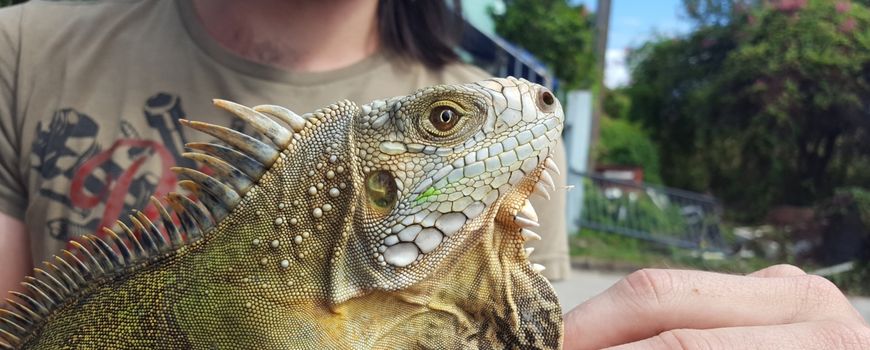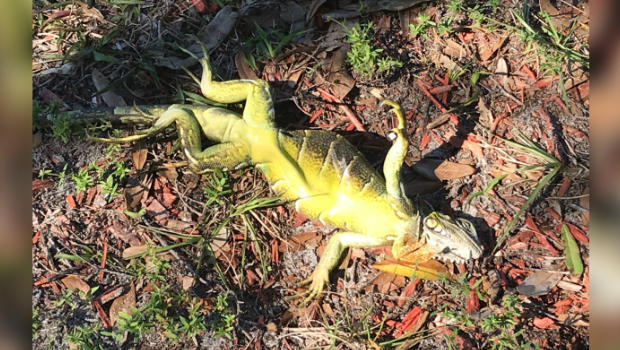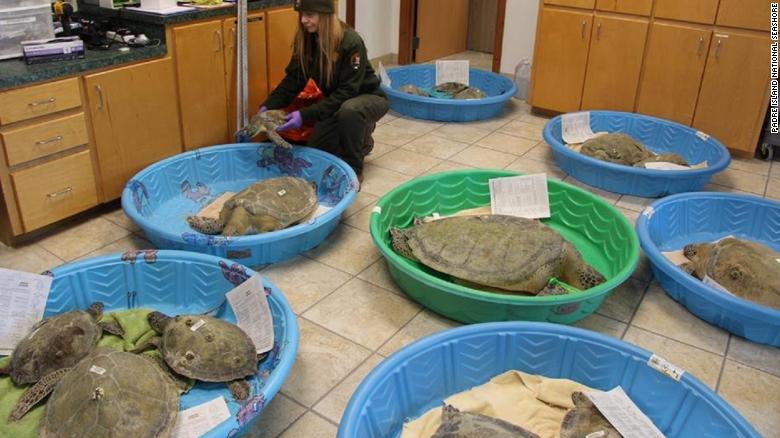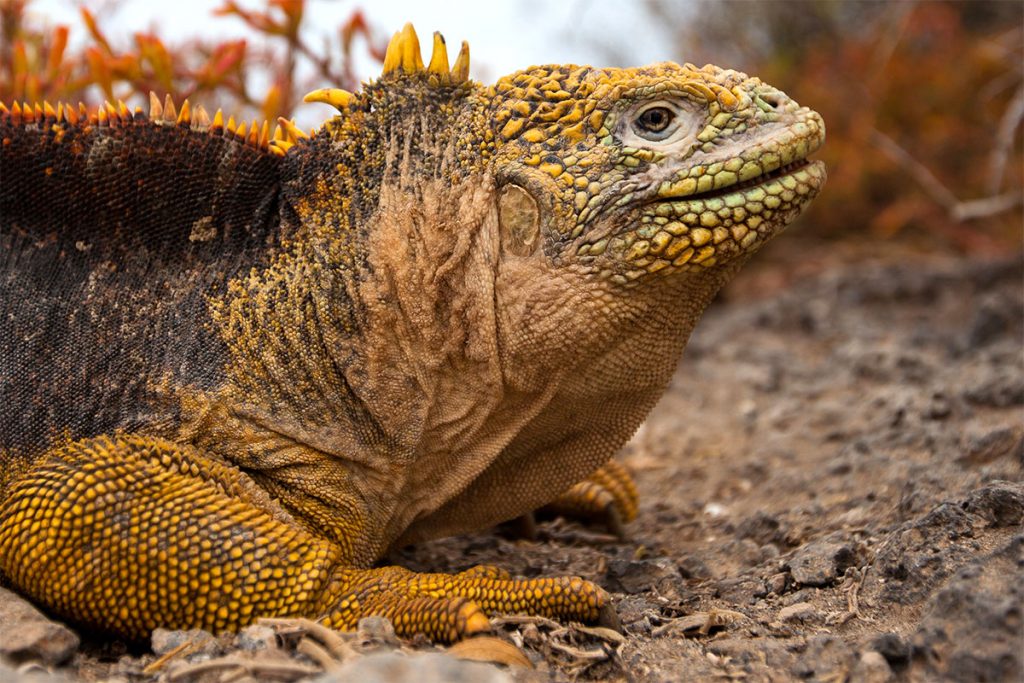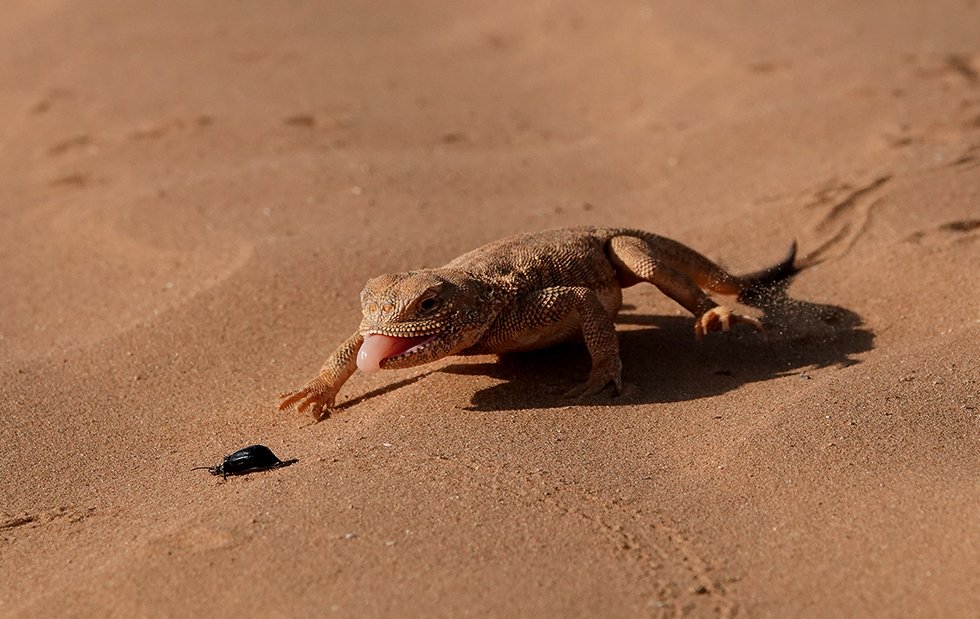
Herpetology and Me
The Inside Story: Reptile ownership often begins with a baby Green Iguana
Friday, May 17, 2019
Tuesday, April 30, 2019
Komodo Dragons could hold the key to beating Superbugs
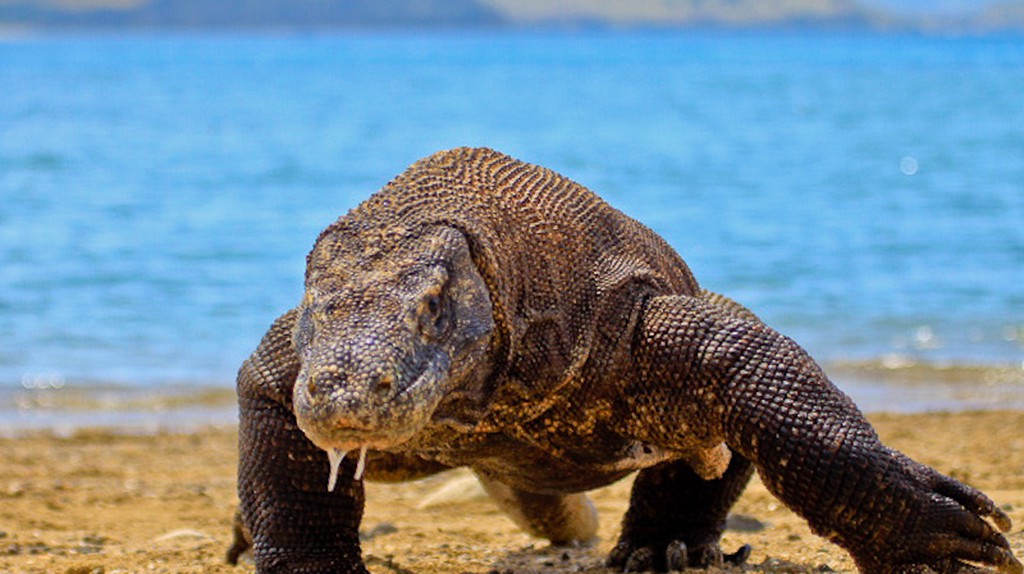
DailyMail
Wednesday, Feb 22nd 2017
Wednesday, Feb 22nd 2017
DRAGONS could hold the key to beating superbugs: Komodo blood found to have 'superantibacterial' properties
- Komodo dragons have at least 57 types of bacteria in saliva, but appear resistant
- Researchers incubated Komodo dragon blood, revealing antimicrobial activity
- Discovery could help develop new drugs to fight antibiotic-resistant superbugs
By Cheyenne Macdonald For Dailymail.com
Published: 22 February 2017
They’re the largest lizards in the world, with deadly saliva that’s loaded with at least 57 species of bacteria to bring down their prey.
And, according to new research, the blood of Komodo dragons could be the key to developing new drugs in the fight against antibiotic-resistant superbugs.
The team used a method known as ‘bioprospecting,’ revealing antimicrobial protein fragments in their blood that protects them against infections.
They’re the largest lizards in the world, with deadly saliva that’s loaded with at least 57 species of bacteria to bring down their prey. And, according to new research, the blood of Komodo dragons could be the key to developing new drugs to fight antibiotic-resistant superbugs
THE GROWING THREAT OF SUPERBUGS
Antibiotic resistance occurs when bacteria change to 'outsmart' or resist antibiotic medicine, making it close to impossible to treat the infection.
The bacterium that carries resistance genes to many different antibiotics is called a superbug.
Most of these infections occur in hospitals or in medical care facilities, such as nursing homes.
The Centers for Disease Control and Prevention said that more than two million people are infected with antibiotic resistant bacteria every year.
More than 23,000 people die from these infections each year.
Experts say that if the epidemic is not brought under control, superbugs may kill more people than cancer by the year 2050.
In the study, researchers from the College of Science at George Mason University investigated whether they could isolate substances known as cationic antimicrobial peptides from Komodo dragon blood – massive lizards the dwell on five small islands in Indonesia.
These CAMP substances are an essential part of the innate immune system, and the team had previously done this with alligator blood.
In a technique called bioprospecting, they incubated the Komodo dragon blood with negatively charged hydrogel particles that they developed to capture the positively charged peptides.
This allowed the researchers to identify and sequence 48 potential CAMPS with mass spectrometry.
All of these, except for one, was derived from histone proteins.
These types of proteins are known to have antimicrobial activities.
The researchers then synthesized eight and tested them against Pseudomonas aeruginosa and Staphylococcus aureus.
The antibiotic resistant strain of S. Aureus (MRSA) is a growing problem worldwide.
The analysis revealed that seven of the peptides from the Komodo dragon blood were potent against both of the bacteria.
The eighth peptide was only effective against P. aeruginosa.
The researchers then synthesized eight and tested them against Pseudomonas aeruginosa and Staphylococcus aureus. The antibiotic resistant strain of S. Aureus (MRSA) is a growing problem worldwide
It’s thought that the bacteria in Komodo dragons’ saliva helps them to kill their prey.
But, the dragons themselves appear to be resistant.
According to the new research, serum derived from the animals may have antibacterial abilities as well.
This could pave the way for new therapeutics to treat antibiotic resistant bacteria.
‘The study demonstrates the power and promise of our bioprospecting approach to cationic antimicrobial peptide (CAMP) discovery and it reveals the presence of a plethora of novel h
‘These findings may have broader implications regarding the role that intact histones and histone-derived peptides play in defending the host from infection.’
Komdo Dragons are complicated killers

Komodo Dragon
Zoo Dragon
Komodo National Park in Indonesia Is One of the World's Finest Treasures
EDIRA PUTRI
19 JUNE 2017
Komodo National Park comprises three islands—Komodo Island, Padar Island, and Rinca Island—and numerous surrounding smaller islands.
Komodo National Park comprises three islands—Komodo Island, Padar Island, and Rinca Island—and numerous surrounding smaller islands.
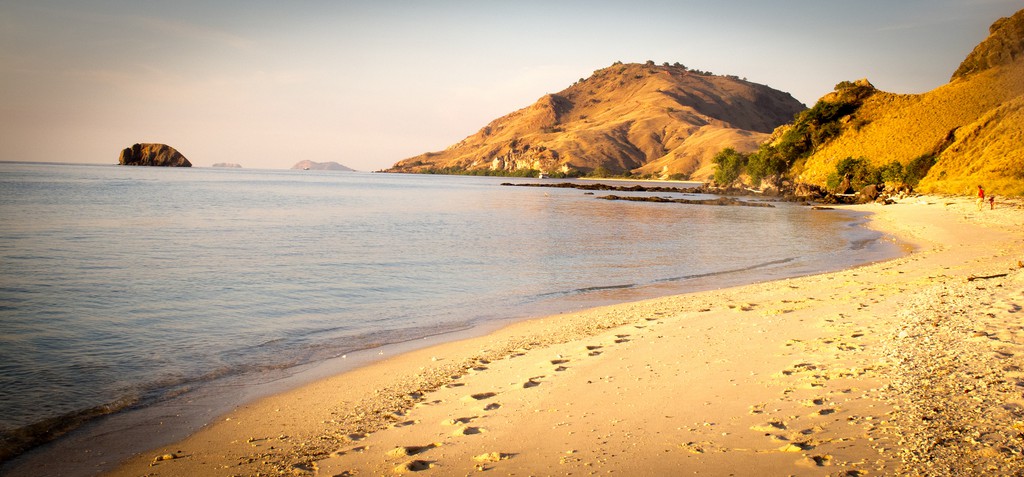
A beach at Komodo National Park
The park’s importance is acknowledged by global organizations such as a UNESCO World Heritage Site in 1991. WWF and Conservation International have recognized the place as a global conservation priority area. The park’s status as one of the 'New 7 Wonders of Nature' has established its global significance.
Komodo Dragons can only be found on five islands in the world, four of which are part of the national park, plus the nearby Flores Island in East Nusa Tenggara.
Komodo Dragons can only be found on five islands in the world, four of which are part of the national park, plus the nearby Flores Island in East Nusa Tenggara.
According to scientists, this particular species has managed to survive for millions of years, making it one of the oldest species that still exists today.
Many scientists believe that the otherworldly Dragons are close relatives to the dinosaur, from the same era and showing similar bodily structure. Thus, Komodo Dragons are often called “the last dinosaur in the world.” The species is the largest living species of lizard, with an average length of 2-3 meters.

The mighty Komodo Dragon
The national park's distinctive natural environment combines a nutrient-rich ocean water and volcanic elements, which have made it possible for thousands of different species to thrive in and around the islands. As many as 1,000 species of tropical fish, 260 species of coral, 70 species of sponge, as well as endemic species like the orange-footed scrub fowl, the Timor deer, Rinca rat, turtles, dolphins, and dugongs.
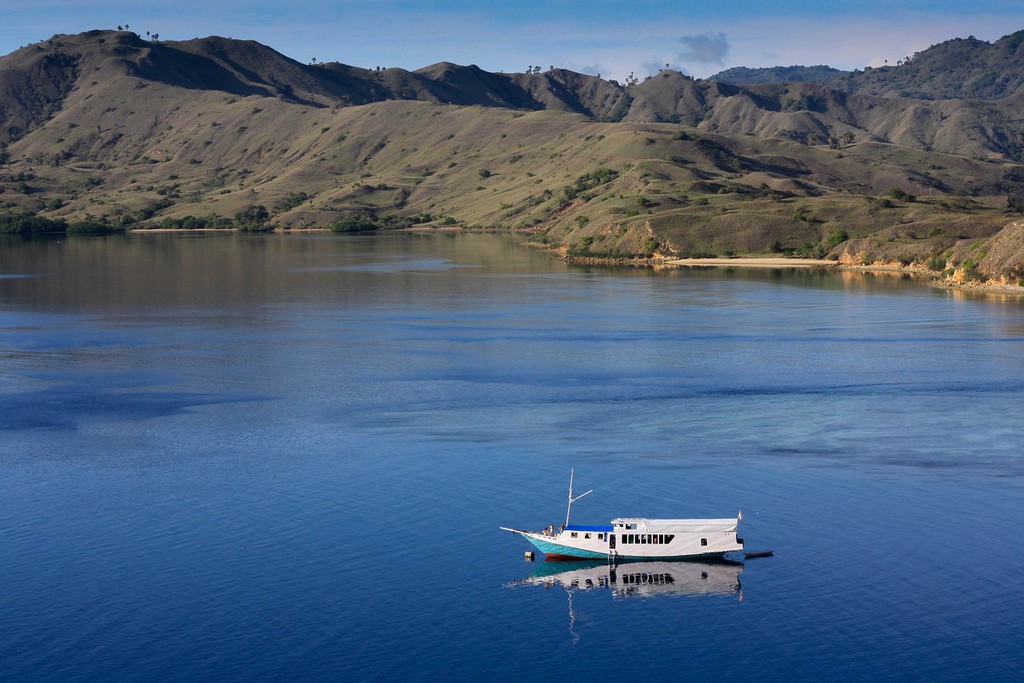
The blue sea of Komodo National Park, Indonesia
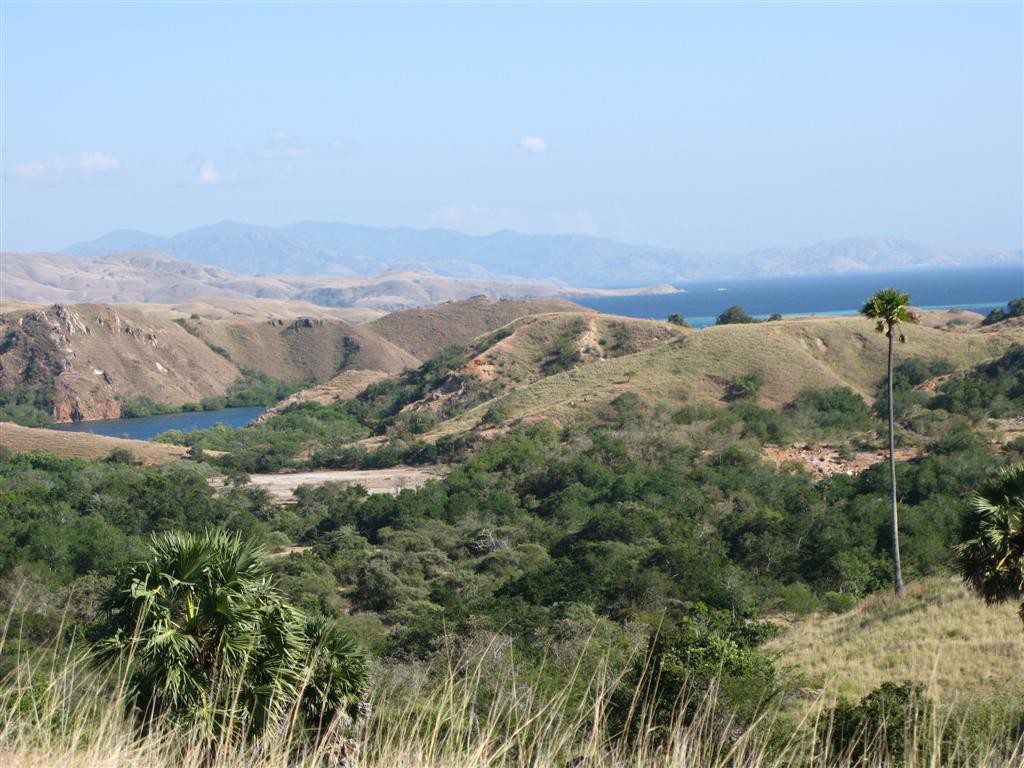
The view at Komodo National Park, Indonesia
Facts about the Komodo Dragon
• They can run up to 20 kph.
• When a baby Komodo dragon hatches it burrows out of its dirt mound of a nest and makes for the nearest tree to stay until it grows up. It must make it to the tree before its mother sees it or she will eat it. Up in the tree it stays living on insects, lizards, birds and anything else that has the misfortune of landing there until it is too heavy to stay on a branch. They are camouflage grey/brown, so hard to see them in the trees, or on the ground.
• There are over 2,200 dragons on the 390 sqm Komodo island and two other islands nearby. They are also all micro-chipped. To do that risky job, one lures them into a cage with raw meat and jabs the chip in.
• Locals believe that it’s the toxic bacteria in Dragon saliva that kills, but a scientific study by the University of Melbourne in 2009 dispelled that and proved that there is venom in their saliva. If the prey manages to get away it soon collapses and dies and the dragon can feast on it later. It's hard to survive their sharp teeth and deadly claws.
Link: https://theculturetrip.com/asia/indonesia/articles/why-the-komodo-national-park-in-indonesia-is-one-of-the-worlds-finest-treasures/
Largest Lizard on Earth | The Komodo Dragon | Deadly 60 | Indonesia | Series 3 | BBC
Published on Feb 14, 2014
SUBSCRIBED 4.2M
Steve Backshall travels to Indonesia in search of reptiles to add to his list of 60 deadly predators. He and his crew have a nerve-racking close encounter with three metre long Komodo dragons, the world's largest venomous lizards!
Komodo Dragons Kill With Venom, Researchers Find
BY CAROLYN BARRY
Dispelling what one expert calls a scientific fairy tale, a new study shows that the fierce lizards ooze venom, not toxic bacteria, into bites to help weaken and ultimately kill their prey.
In the venom, some compounds that reduce blood pressure are as potent as those found in the word's most venomous snake, western Australia's inland Taipan.
Komodo Combo Attack
While his colleagues expressed surprise at the findings, Fry said he wasn't so shocked.
His earlier research had shown that other lizard species—such as iguanas, legless lizards, and monitor lizards—are also venomous.
His earlier research had shown that other lizard species—such as iguanas, legless lizards, and monitor lizards—are also venomous.
In fact, Fry estimates that close to a hundred of the more than 5,000 known lizard species use venom.
What is surprising, Fry said, is Komodo dragons' elaborate venom-delivery system.
"It's the most complex duct system described in reptiles to date," he said.
"It's the most complex duct system described in reptiles to date," he said.
Snakes typically have a single venom duct that leads to their fangs. But Komodos have multiple ducts located between their teeth.
However, this means Komodo dragons don't deliver their venom as efficiently as snakes, Fry said.
However, this means Komodo dragons don't deliver their venom as efficiently as snakes, Fry said.
Rather than injecting venom directly via a forceful bite, the dragons use a specialized bite-and-pull motion to ooze the toxin into wounds during a sustained, frenzied attack.
"They're not like the cobra, where venom is the only game in town. Komodos have a combined arsenal," Fry said.
The findings suggest that the Komodo's ancient relative, the Megalania, used a similar venom-plus-wounding approach.
The giant lizard, which roamed Australia about 40,000 years ago, measured about 13 feet (4 meters) long.



Komodo dragons fight over a kill

Steve Irwin

Steve Irwin
Wednesday, April 24, 2019
Information Overload is the Bane of my Life
My daily struggle is to understand what is important, to my situation, in the constant barrage of information on the Internet.
What can and should be ignored?
Is my purpose to seek distraction, novelty and entertainment?
Or is the goal and purpose to my Net Surfing to gain valuable knowledge?
What do I hope to accomplish?
“There are things that attract human attention, and there is often a huge gap between what is important and what is attractive and interesting."
- Yuval Noah Harari
And Donald Trump has not helped make being informed easy with all his mixed messages.
“If the doors of perception were cleansed every thing would appear to man as it is, Infinite. For man has closed himself up, till he sees all things thro' narrow chinks of his cavern.”
― William Blake, The Marriage of Heaven and HellMonday, April 8, 2019
Culturing Wingless Fruit Flies (Drosophila melanogaster) as Live Food
Culturing Wingless Fruit Flies (Drosophila melanogaster) as Live Food
Subscribe: http://tinyurl.com/SUB-Aquarimax
Check out my Quick Guides! https://www.youtube.com/playlist?list...
My Aquarimax Facebook page: https://www.facebook.com/aquarimax/
The Aquarimax Podcast on iTunes: https://goo.gl/EDkjul
My Twitter: https://twitter.com/aquarimax
My website: http://www.aquarimax.com/
How to Breed Fruit Flies
How to Breed Fruit Flies
one current methods for breeding flightless fruit flies ( melanogaster)
Friday, April 5, 2019
Posters

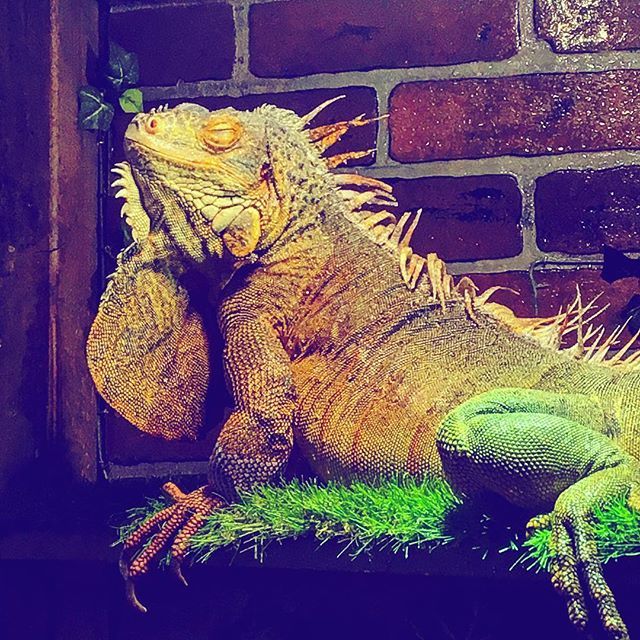

Mariguana_Official
@TYTMariguana
TweetsTweets, current page.170
FollowingFollowing122
FollowersFollowers231
LikesLikes628
FollowFollow @TYTMariguana
Mariguana_Official
@TYTMariguana
Official twitter account of Mariguana of The Young Turks. Simply an immigrant trying to legalize Mariguana
California, USA
tyt.com/mariguana
Joined November 2018
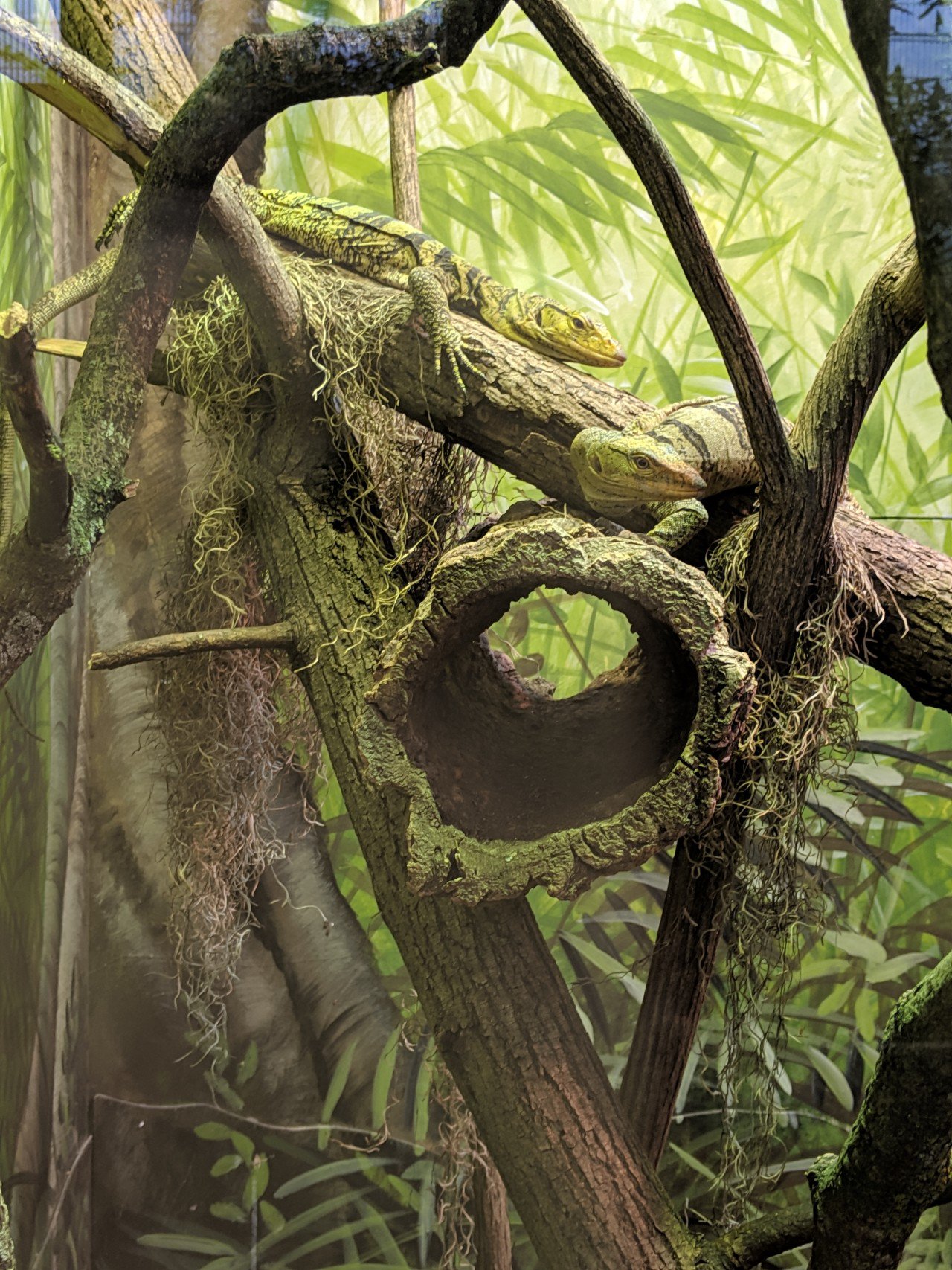
How many monitor lizards do you see? #BrookfieldZoo #WildlySurprising #lizard
Brookfield ZooVerified account
@brookfield_zoo
 Jim and Ange @JimandAngecomix Mar 28
Jim and Ange @JimandAngecomix Mar 28
Geckos far @maria_raducanu
 #geckos #lizard #digitalart
#geckos #lizard #digitalart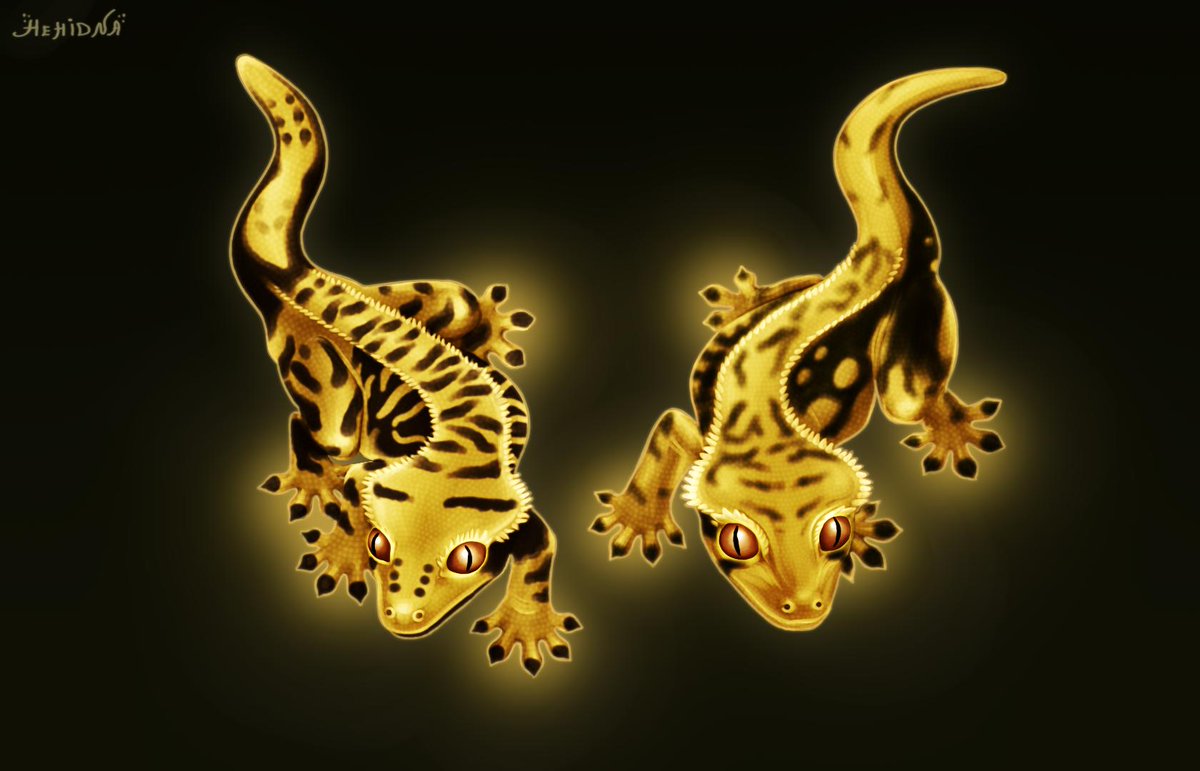

dave collier @dave_collier Apr 1
This #lizard was not very friendly. #manukanisland https://ift.tt/2OzRhmY pic.twitter.com/Zb2TgakFtY

Daniel J. Cox @danieljcox Mar 29
A Komodo dragon makes his way across the forest floor. These guys definitely remind me of alligators, and I'm convinced they're the land version of the same. Shot with the Lumix G9 and the Leica 50-200mm lens #lumix #wherelumixgoes #lumixg9 #G9 #reptiles #lizard

Warriors4Wildlife
🌐Ⓥ 🐾 @W4W_Global Mar 27
#WildlifeTrafficking: #Indonesian #Police on Wednesday arrested nine men suspected of trafficking #KomodoDragons, the largest living species of #Lizard, as well as other #Endangered #Birds and #WildCats destined for use in #TraditionalMedicines. https://reut.rs/2HOSPt5
 Drive 4 Wildlife @Drive4Wildlife Mar 31
Drive 4 Wildlife @Drive4Wildlife Mar 31Drive 4 Wildlife's #AnimalFactOfTheDay Nile monitor lizards are Africa's longest lizard species! They can grow up to 2 metres in length, with their tail making up half of that length! #lizard #africa #reptile
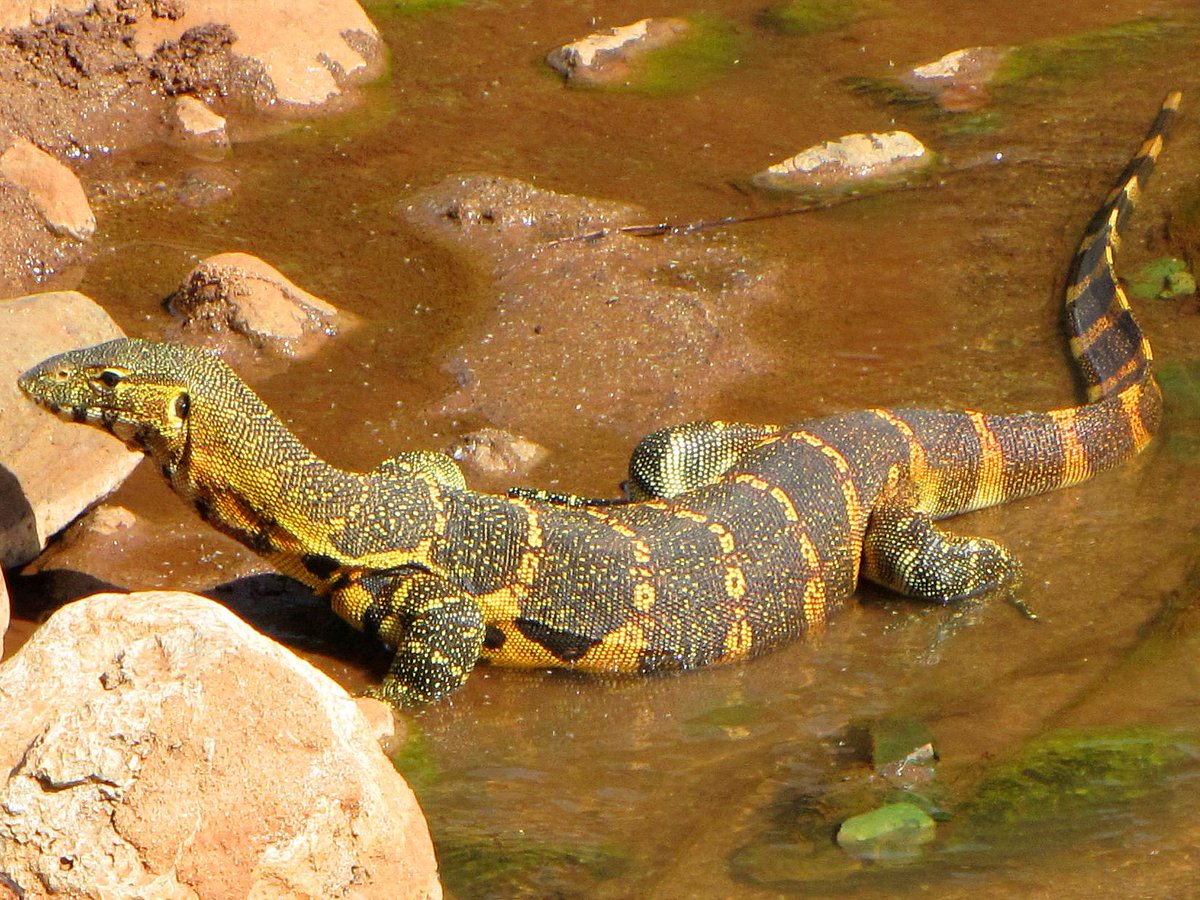
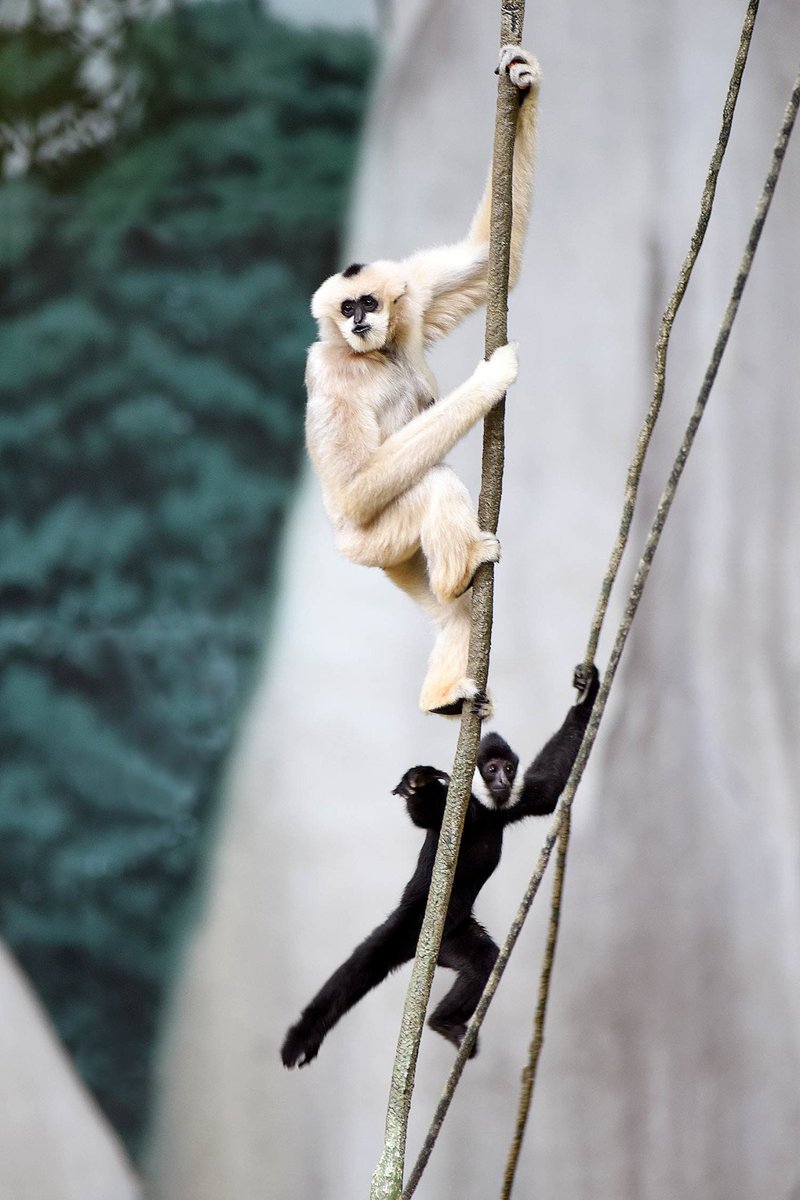
Friday, March 22, 2019
Wednesday, February 20, 2019
Gran Canaria Giant Lizard (Gallotia stehlini)
 Philip🦎@EcotrakNI @EcotrakNI
Philip🦎@EcotrakNI @EcotrakNI A bit of holiday herping at Meloneras #GranCanaria produced lots of sightings of the Gran Canaria Giant Lizard (Gallotia stehlini) - up to 80cm long.
Sunday, February 10, 2019
Charges recommended against Reptile Guy
News
Charges recommended against Reptile Guy
by Kevin Mills - Mission City Record
posted Jan 14, 2016
The BCSPCA has recommended animal cruelty charges against Mission’s The Reptile Guy Rescue and Education Centre, owned by Mike Hopcraft.
Marcie Moriarty, chief prevention and enforcement officer for the BCSPCA, confirmed the recommendation this week and said more charges may be sought.
“In virtually any case where we do seize animals, our role as the investigation agency is to prepare a report to Crown counsel. We have done that.” she explained.
The charges are being recommended under the Prevention of Cruelty to Animals Act.
While one set of recommendations has already been presented, a second set will go in shortly. Moriarty said it could take several months before hearing back from Crown counsel.
Court documents – the search warrant and information to obtain a search warrant – were made public by an animal activist group and state that in June 2015, the SPCA received a complaint from an ex-employee at the reptile centre, including photographs of animals in distress.
The documents list a series of concerns following several inspections. The allegations include animals enclosed in unsanitary conditions, dead animals, underweight animals, animals without water, a fungal infection, overcrowding and animals in critical distress.
Other concerns included small enclosures, inappropriate lighting and heating, and exposed wiring.
According to the documentation, a mountain horned dragon was found dead, with its eyes eaten out by crickets.
Two bearded dragons were seized, “one was found to be emaciated and had four broken legs,” according to the court documents.
The dragon was euthanized. The second dragon was also emaciated, according to the allegations.
Moriarty said the BCSPCA is currently working with Hopcraft.
“There were some outstanding orders with respect to animals in his care and he has had a veterinarian out to examine the animals and he’s complying with the veterinarian’s recommendations.”
She added that unless the BCSPCA receives additional concerns, they will just be following up to ensure that animals are not in distress.
“Our role is to ensure, whether you are an individual or a business, whether you own a cat or an iguana, it is receiving care and remaining free from distress as the law requires.”
Hopcraft is declining to talk to the media.
But on his Facebook page he said he wanted to clear up some of the allegations.
On the claim there was a bearded dragon with four broken legs, Hopcraft wrote, “To my and my staff’s knowledge, there was no such bearded dragon and we are not sure where that information is coming from.”
He added there is a “huge difference between broken limbs and limbs affected by metabolic bone disease,” saying a vet may diagnose it as fractures depending on the severity of the condition.
As for the overcrowding concerns, Hopcraft said there is a “double standard.”
He wrote, “Are some of my animals over crowded and being kept in enclosures that are too small? For a long term situation, yes.
“Our isolation snakes are kept in smaller enclosures as they are not here long term. This is the same as the SPCA keeping adult cats in 2x2x2 cages or dogs in 6-8 foot cages. Is it ideal? No, but it is what is necessary in order to take in the animals and find them new homes.”
He also addresses more concerns in his post.
Two-Headed Boa Constrictor
Two-Headed Boa Constrictor
diagonalviewPublished: June 13, 2016
Two-Headed Boa Constrictor
Link: https://rumble.com/v30qaw-two-headed-boa-constrictor.html
Newborn Boa Constrictor Still In Amniotic Sac
Incredible Footage Shows Newborn Boa Constrictor Still In Amniotic Sac
[source: https://buff.ly/2SmuOPm ]
Link:
https://youtu.be/Y3iz3eEwvzg
Life
is so amazing! This is a boa constrictor still in its amniotic sac that
has just been born. Little guy hasn't even had its first breath yet. So
amazing to witness!
It might be strange to see a snake in a sack, rather than a soft-shell egg, like we are used to seeing them. But according to a page on Wikipedia, both reptiles (this includes snakes) and mammals are members of the clade "Amniotes", meaning that these animals possess amniotic sacs. They may also further protect the fetus with a shell, but this is not necessarily the case for all amniotes and many species have gained and then lost shells as they evolved.
Chickens also have amniotic sacs in their eggs. There is an incredibly thin membrane between the shell and the egg white, which is technically the amniotic sac.
Despite the ominous part of their name, boa constrictors are actually quite frequently kept as domestic pets. The give birth to live young, where the mother bite through the sac to release the young. Boas are among the 30% of snakes that do give birth to their young, as opposed to pythons, which are classified as being ovoviviparous, meaning that their eggs emerge inside of the body.
It might be strange to see a snake in a sack, rather than a soft-shell egg, like we are used to seeing them. But according to a page on Wikipedia, both reptiles (this includes snakes) and mammals are members of the clade "Amniotes", meaning that these animals possess amniotic sacs. They may also further protect the fetus with a shell, but this is not necessarily the case for all amniotes and many species have gained and then lost shells as they evolved.
Chickens also have amniotic sacs in their eggs. There is an incredibly thin membrane between the shell and the egg white, which is technically the amniotic sac.
Despite the ominous part of their name, boa constrictors are actually quite frequently kept as domestic pets. The give birth to live young, where the mother bite through the sac to release the young. Boas are among the 30% of snakes that do give birth to their young, as opposed to pythons, which are classified as being ovoviviparous, meaning that their eggs emerge inside of the body.
Boa
mothers carry their young for between 100 and 150 days. Boa litters
typically account about 25 baby boa constrictors, but can be as low as
10 snakes to an incredible count of 64.
Source: https://rumble.com/v5d495-just-born-boa-constrictor.html
Friday, February 8, 2019
Chlcken of the Trees - Common Green Iguana
Common Name: Green Iguana
Green iguanas have strong jaws with razor-sharp teeth and powerfull tails.
Fast Facts
- Description
- Arboreal; earthy green lizard with transverse bands on the body
and tail; short, powerful limbs; sharp claws; long, strong tail; large
flap of skin (dewlap) that hangs from throat and helps to regulate
temperature; prominent crest of soft spines along the middle of the neck
and back, beginning at base of the skull
Male: Males typically have brighter overall coloration than females - Size
- Male: 120-195 cm (4-6.5 ft) as adults
Female: Slightly smaller than males - Weight
- 4.5-6.75 kg (10-15 lb.)
- Diet
- Omnivorous as young but adults are almost exclusively herbivores; fruits, flowers, leaves; insects and snails opportunistically; young iguanas eat more insects and shift to 95% vegetation as they age
- Incubation
- 60-85 days
Clutch Size: 10-50 eggs - Sexual Maturity
- 2 years; males sometimes longer (need longer period of growth in order to be large enough to compete for females)
- Life Span
- 15 years
- Range
- No data
- Habitat
- Tree dweller in tropics; trees/bushes close to water in tropical rainforests; prefers temperatures in the upper 90s (Farenheit)
- Population
- Global: No data
- Status
- IUCN: No data
CITES: Not listed
USFWS: Not listed
Fun Facts
- Iguanas are able to hold their breath for up to 30 minutes.
- They will often jump from tree to water using their powerful tail for swimming to escape. They are also able to leap down 40-50 feet without injury.
- To attract a mate, mature males may turn orange during breeding season.
- Iguanas store large amounts of fat in their lower jaw and neck area in order to survive times of famine. The pouch at the base of their neck is called a dewlap, and is used in display.
- Their tail has weakened vertebrae so the iguana can break free and escape if caught by the tail. Iguanas are also able to whip their tail in defense, leaving behind a stinging welt or worse.
Ecology and Conservation
Iguana meat is a valuable source of protein; theoretically, farming iguanas could yield more meat per acre than cattle, while requiring only 70% of what a chicken consumes. With the loss of habitat due to deforestation, iguana farming research is on the rise.Iguana eggs are also considered a delicacy in the tropics, coining the term "chicken of the tree."
Although not listed as endangered or threatened, populations are under pressure from both habitat destruction and their popularity in the pet trade.
Bibliography
Although not listed as endangered or threatened, populations are under pressure from both habitat destruction and their popularity in the pet trade.Burghardt, Gordon M., and Rand, Stanley A. Iguanas of the World. New Jersey: Noyes Publications, 1982.
Burghardt, Gordon M., and Rand, Stanley A. Iguanas of the World. New Jersey: Noyes Publications, 1982.
Burghardt, Gordon M., and Rand, Stanley A. Iguanas of the World. New Jersey: Noyes Publications, 1982.
Halliday, Tim R., and Adler, Kraig. The Encyclopedia of Reptiles and Amphibians. New York: Equinox Books, 1986.
Roberts, Mervin and Martha D. Roberts. All About Iguanas. T.F.H. Publications, Inc., New Jersey. 1976.
Link: https://seaworld.org/animals/facts/reptiles/green-iguana/
Sunday, January 27, 2019
Frozen iguanas fall out of trees in Florida
The cold is causing frozen iguanas to fall from trees in Florida
http://cnn.it/2Ec1Ypk
January 5, 2018
By AJ Willingham, CNN
(CNN)There's an iguanocalypse in Florida, or at least that's what it looks like judging from the photos worried Floridians are posting all over social media.
According to the park's Facebook page, the turtles are being cared for in warm kiddie pools while the cold snap passes.
Because of the cold temperatures sweeping the nation, iguanas are dropping out of trees like overripe mangoes, littering the ground in an apparent state of rigor mortis.
One tiny detail, though: They're probably not dead. They are, however, literally frozen.
Emily Maple, the reptile keeper at the Palm Beach County Zoo, told CNN affiliate WPEC the cold-blooded animals get "cold stunned" -- that is, they basically freeze -- if the temperature gets below 45 degrees Fahrenheit.
"If it's just for a day or two they'll just get to where they're completely frozen in time. They're still able to breathe. They're still able to do bodily functions just very slow," said Maple.
See, at first you probably felt sorry for them, didn't you? But what they're doing is kind of aspirational: When things start to go sideways, literally shut down your body, freak some stranger out by keeling over near their pool, and wait it out in a state of suspended animation. Just, you know. don't actually die.
The iguanas aren't the only ones noping out of the cold weather.
Sea turtles near the Padre Island National Seashore near Corpus Christi, Texas, had to be brought inside to avoid what the National Park Service is calling a "sea turtle cold stunning event due to extremely low temperatures."
Link: http://cnn.it/2Ec1Ypk
Saturday, January 26, 2019
Iguanas reintroduced to Galapagos island after 200 years
The Land Iguanas (Conolophus subcristatus) were introduced to the coastal regions Puerto Nuevo and Bucanero of Santiago Island
Iguanas reintroduced to Galapagos island after 200 years
Emily Dixon, CNN • Updated 8th January 2019
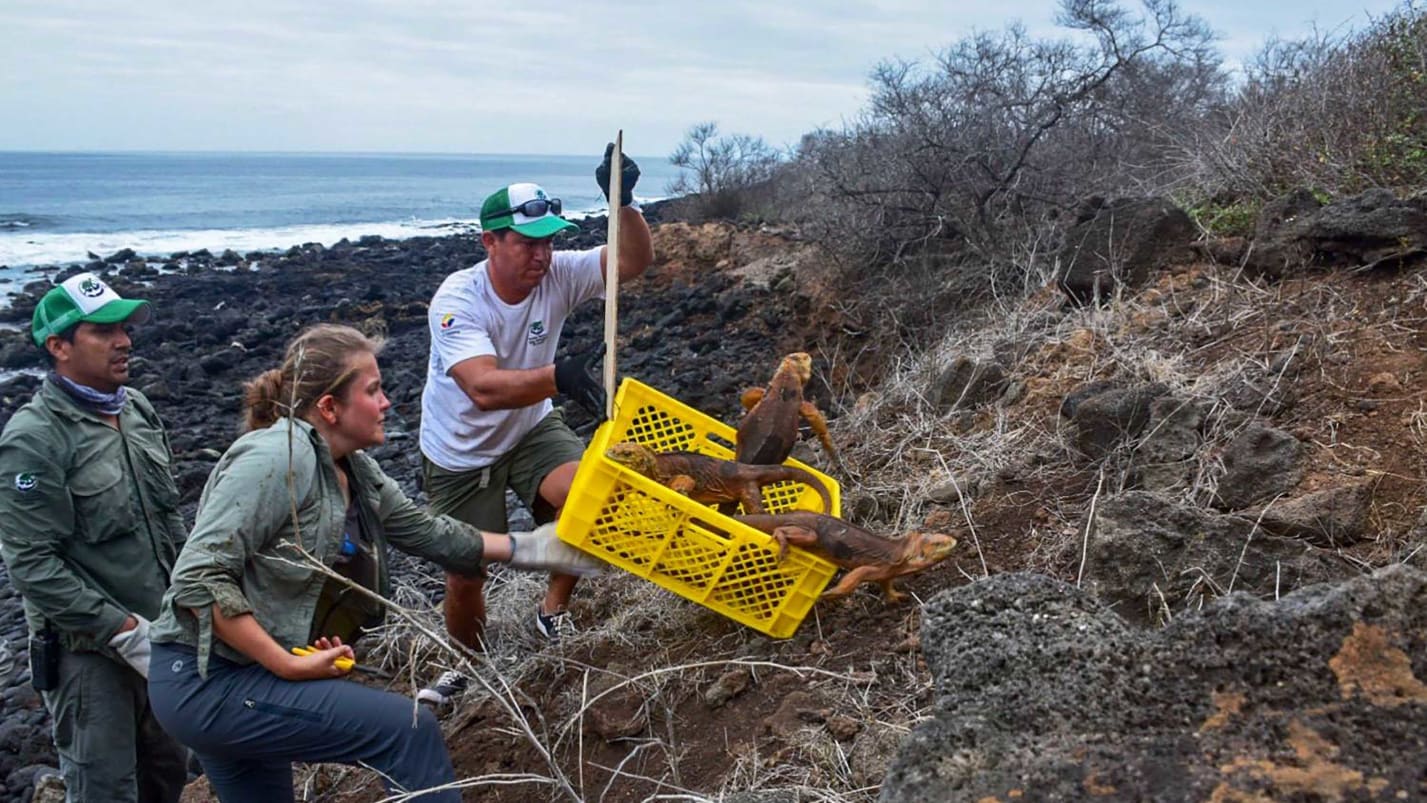
Un gran noticia para #Galápagos, para el #Ecuador y el mundo.
Gracias a nuestros aliados estratégicos @NoExtinctions#AcciónGuardaparque
Parque Galápagos
✔
@parquegalapagos
[BOLETÍN] Iguanas terrestres ayudarán a la restauración ecológica de la isla Santiago.
Leer más http://ow.ly/3R1g30ndQID
Leer más http://ow.ly/3R1g30ndQID
(CNN) — The
last person to officially record seeing a land iguana on Santiago
Island in the Galapagos was Charles Darwin in 1835. After that, iguanas
were erased from the island, wiped out by invasive predators like the
feral pig.
But now, 184 years later, the lizards have made a return, thanks to an initiative by the Galapagos National Park authority.
More than 1,400 land iguanas, scientific name Conolophus subcristatus,
were taken from the neighboring North Seymour Island and released on
Santiago Island between January 3 and 4.
They were introduced to the
coastal regions Puerto Nuevo and Bucanero, authorities said in a
statement, which have ecosystems that closely mimic their former home.
On Twitter, Galápagos National Park Director Jorge Carrión called the reintroduction of the iguanas "great news for #Galápagos, for #Ecuador and the world."
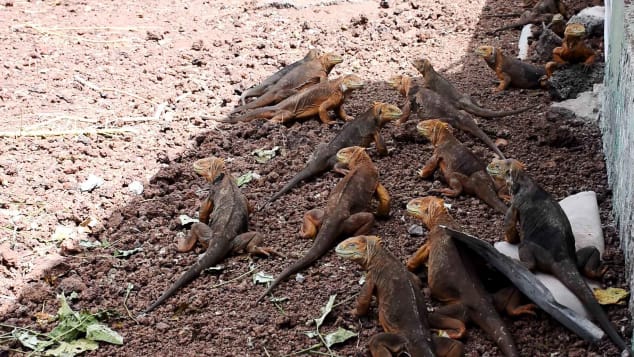
More than 1,000 iguanas were relocated from the Galapagos' North Seymour Island by the national park authority.
Facebook/parquegalapagos
According to the Galapagos Conservation Trust, the land iguana population of the archipelago suffered a significant decline
after the introduction of species like cats, rats and dogs, as well as
the predatory feral pig. These species prey on young iguanas and eggs --
though some cats have targeted adult iguanas up to four years old, says
the trust -- and also compete with the lizards for food.
The
reintroduction initiative, carried out alongside New Zealand's Massey
University, was developed in response to the depletion of vegetation
like the cactus on North Seymour Island, threatening the some 5,000
iguanas' food source.
Some
iguanas have remained on North Seymour Island to avoid compromising its
existing vegetation. Galapagos ecosystems director Danny Rueda
explained: "The land iguana is a herbivore that helps ecosystems by
dispersing seeds and maintaining open areas free from vegetation."
Authorities
will continue to monitor the Santiago Island iguanas, determining
whether they're creating nests and finding sufficient food. They'll also
keep a close eye on newer species like rodents and ants to prevent them
disturbing the iguanas' nests.
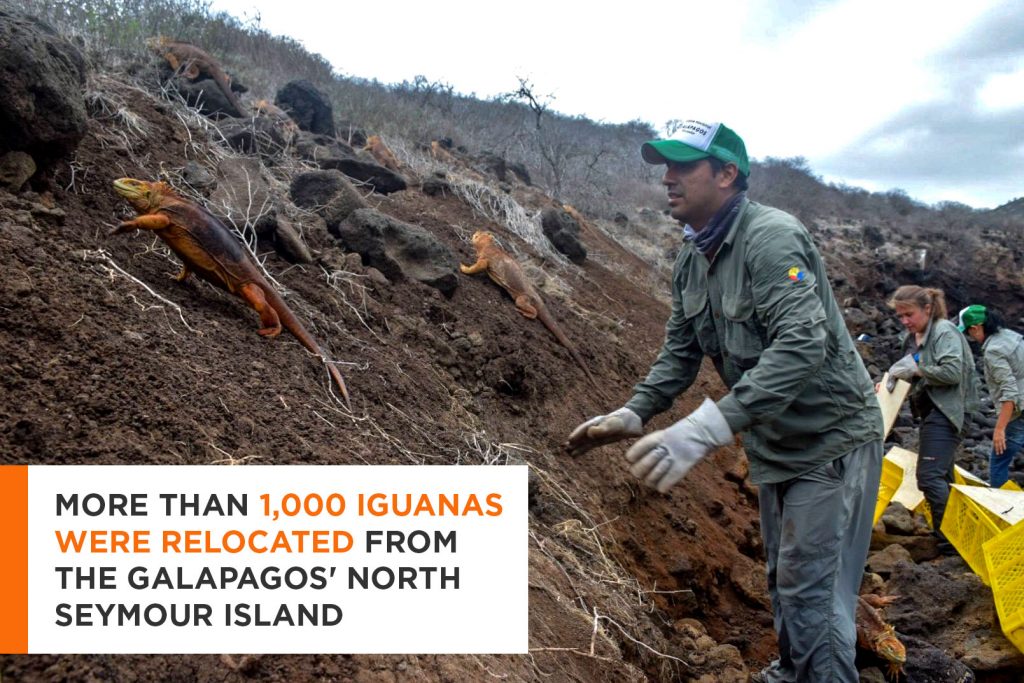
Threatened Galápagos Land Iguanas Return to Santiago Island En-Masse After 180-Year Absence
Reintroduction of Galápagos Land Iguanas helps restore Santiago Island’s ecological health and protect this important population.
Press Release, 8 January 2019Contact: Sally Esposito, Island Conservation, Director of Marketing & Communications, +1 706-969-2783, sally.esposito@islandconservation.org
Resources: photos, interviews
The Directorate of Galápagos National Park (Dirección del Parque Nacional Galápagos – DPNG) and the international nonprofit organization Island Conservation reintroduced 1,436 Galápagos Land Iguanas (Conolophus subcristatus) to Santiago Island on the 4th
January 2019. The partners are reintroducing the land iguanas in an
effort to restore the island’s ecological health and to provide the
opportunity for this iguana species to thrive.
The DNPG and Island Conservation captured the land iguanas in late
2018, and further captures are underway for additional releases. The
DNPG and Massey University from New Zealand will begin monitoring the
reintroduced iguana population in February.Karl Campbell, Island Conservation’s South America Regional Director stated:
This is the largest iguana population ever translocated for a reintroduction and sees critical ecosystem processes like seed dispersal reinitiated for the first time in 180 years.”
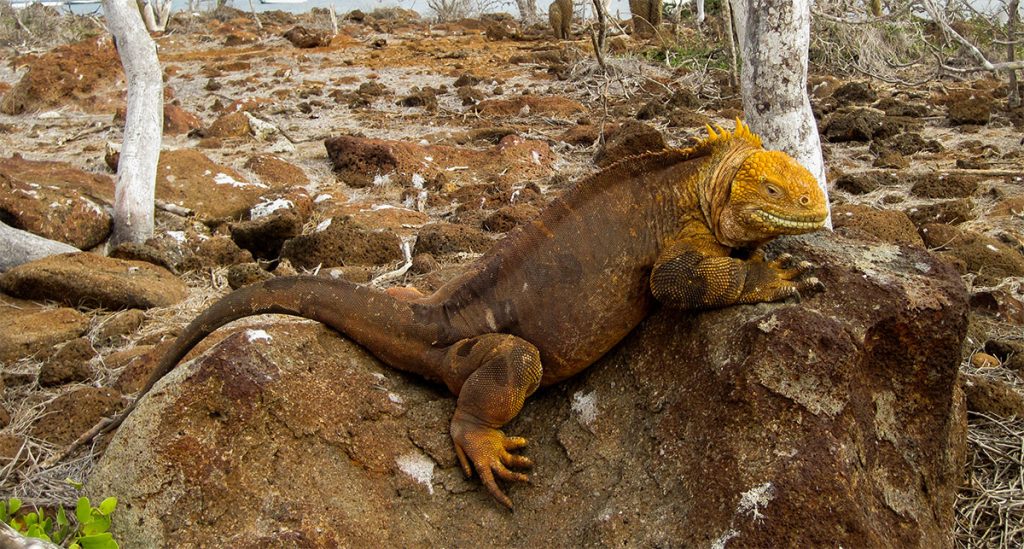
Charles Darwin was the second-last person to record land iguanas alive on Santiago Island in 1835, with Abel du Petit-Thouars being the last in 1838. Introduced feral pigs wiped out the land iguana population. When the California Academy of Sciences visited in 1903 they found only skeletal remains.
Santiago Island (58,465 ha / 144,470 acres) was freed of feral pigs in 2000, and feral goats and donkeys in 2005.
Santiago Island is the largest island worldwide to be freed of feral pigs, goats and donkeys, setting the stage for the next phase of island restoration activities like returning locally extinct species.
Other large scale restoration efforts are planned for other islands in the Galápagos. Funding contingent, in 2020 invasive predators will be eradicated from Floreana Island, protecting 55 endangered species and allowing for the reintroduction of 13 locally extinct species, including the Endangered Floreana Mockingbird and Floreana Giant Tortoise.
About Island Conservation
Island Conservation prevents extinctions by removing invasive species from islands. To date, we have successfully restored 63 islands worldwide, benefiting 1173 populations of 468 species and subspecies. Working together with local communities, government management agencies, and conservation organizations, we select islands that have the greatest potential for preventing the extinction of globally threatened species.- Press Release: Ecological Restoration of North Seymour Island Underway Thanks to Rat Removal - January 24, 2019
- BBC Wildlife Features the Release of Galápagos Land Iguanas On Santiago Island - January 11, 2019
- We Must Act Now: Threat from Seabird Eating Mice Continues to Evolve - January 10, 2019
- Threatened Galápagos Land Iguanas Return to Santiago Island En-Masse After 180-Year Absence - January 8, 2019
- Novelist Jonathan Franzen Highlights Island Conservation in Sierra Club Interview - January 7, 2019
- Santa Cruz Sentinel: Island Conservation and Preventing Extinctions - January 4, 2019
- IUCN: Do non-native species count as biodiversity? - December 18, 2018
- A Message of Hope for Endangered Island Wildlife - December 11, 2018
- Press Release: Historic Project to Protect Palau’s Iconic Species Declared Successful - December 11, 2018
- Island Conservation’s Board Resolution for the Genetic Biocontrol of Invasive Rodents Partnership - December 6, 2018
Operation Desecheo: Completed
Operation Acteon & Gambier – Success!
The Humboldt Penguin
French Polynesia Restoration
Popular Authors
Share this post!
Subscribe to our Newsletter
Island Conservation
About Island Conservation
Island Conservation prevents extinctions by removing invasive species from islands. To date, we have successfully restored 63 islands worldwide, benefiting 1173 populations of 468 species and subspecies. Working together with local communities, government management agencies, and conservation organizations, we select islands that have the greatest potential for preventing the extinction of globally threatened species.Jorge Carrión Tacuri
@JcarrionTacuri
Director Parque
Nacional Galápagos, el desarrollo armónico entre sociedad y naturaleza
es posible, aprovechando de forma racional los recursos de Galápagos.
Parque Nacional Galápagos
Joined August 2015
Subscribe to:
Comments (Atom)




